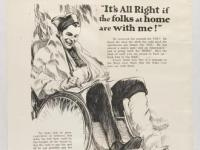Though the United States entered World War I years after it had begun, and though American losses could not rival that of its European counterparts, the casualties incurred by the new military technology required new medical techniques and veteran aid services when the boys came home.
This lesson will explore the kinds of injuries American soldiers in World War I received and the treatment, care, and assistance they came home to as well as the national attitudes towards war injuries and disabled veterans as seen in wartime propaganda. This lesson relies heavily on visual sources such as photographs, posters, cards, and video, as well as some text. Students will use their prior knowledge, creativity, and primary and secondary source analysis to discuss and answer questions about WWI veterans.


